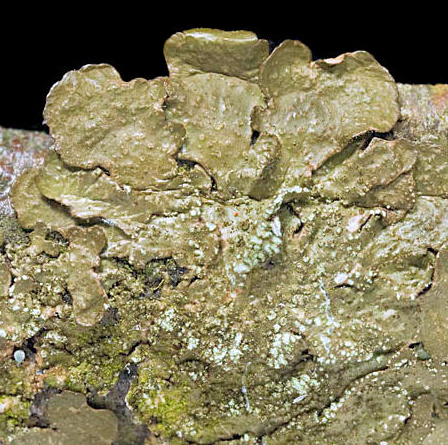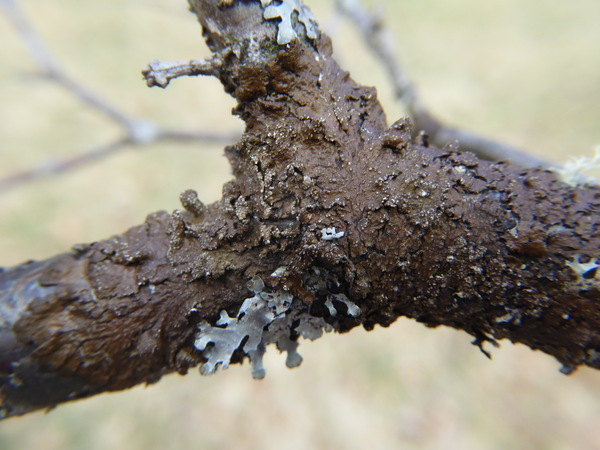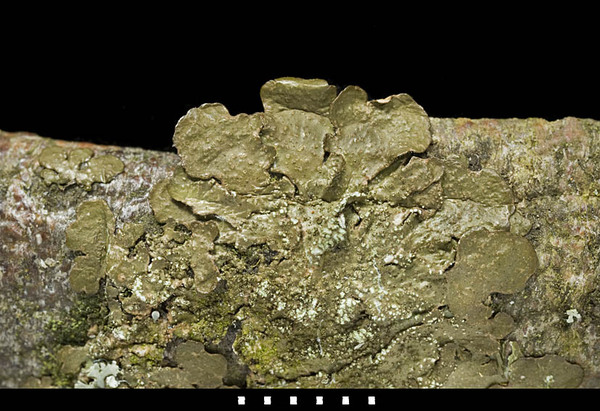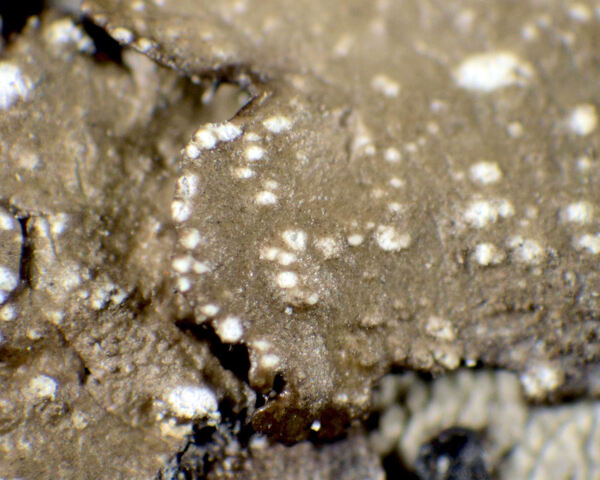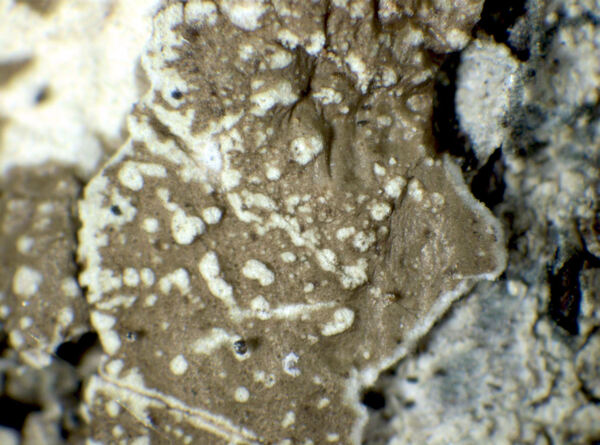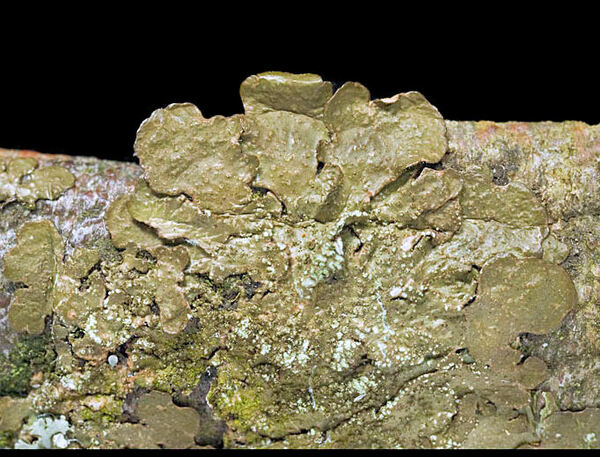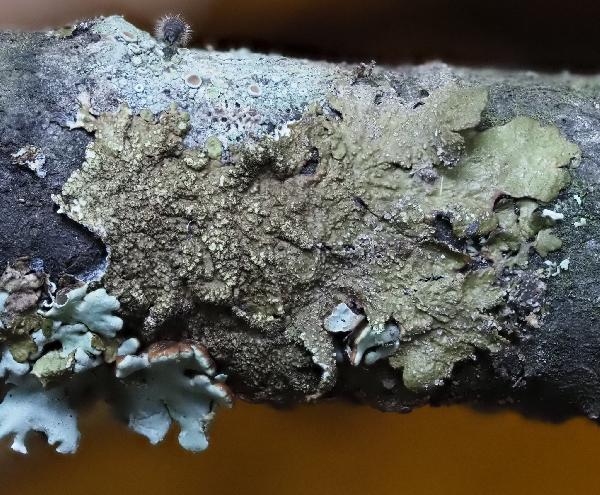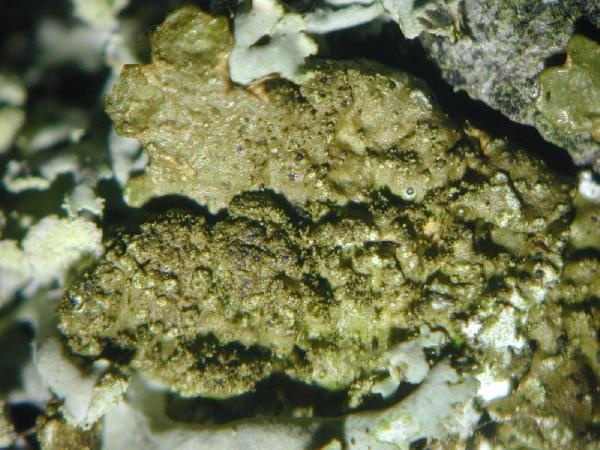Melanelixia subaurifera (Nyl.) O. Blanco, A. Crespo, Divakar, Essl., D. Hawksw. & Lumbsch
Mycol. Res., 108: 882, 2004. Basionym: Parmelia subaurifera Nyl. - Flora, 56: 22, 1873.
Synonyms: Melanelia subaurifera (Nyl.) Essl.; Parmelia olivacea var. subaurifera (Nyl.) O.J. Rich.
Distribution: N - VG (Castello 1996, 2002, Carvalho 1997, Martellos & Castello 2004, Castello & Skert 2005), Frl (Badin & Nimis 1996, Castello & Skert 2005, Tretiach & Molaro 2007), Ven (Nascimbene & Caniglia 1997, 2000b, 2002c, 2003c, Lazzarin 1997, 2000, Caniglia & al. 1999, Valcuvia & al. 2000c, Nascimbene 2005c, 2008, 2008c, Nascimbene & al. 2005b, 2006, 2006c, 2006e, 2007, 2009c, 2010b, 2013b, 2008b, Nascimbene & Marini 2007, 2010, Brackel 2013), TAA (Nascimbene & Caniglia 2000b, Nascimbene 2003, 2005b, 2006b, 2006c, 2014, Nascimbene & al. 2006e, 2007b, 2014, 2022, Stofer 2006, Nascimbene & Marini 2015, Nimis & al. 2015, Trindade & al. 2021), Lomb (Alessio & al. 1995, Arosio & Rinaldi 1995, Valcuvia & Gianatti 1995, Zocchi & al. 1997, Roella 1999, Arosio & al. 2000, 2003, Valcuvia & al. 2003, Dalle Vedove & al. 2004, Furlanetto 2010, Brackel 2010, Gheza & al. 2015, 2022b, 2023, Gheza 2019), Piem (Caniglia & al. 1992, Arosio & al. 1998, Piervittori 1998, 2003, Isocrono & Falletti 1999, Isocrono & al. 2004, 2006, 2007, 2009, Griselli & al. 2003, Isocrono & Piervittori 2008, Furlanetto 2010, Matteucci & al. 2010, Giordani & Malaspina 2016), VA (Valcuvia 2000, Piervittori & al. 2001), Emil (Bassi 1995, Gasparo & Tretiach 1996, Nimis & al. 1996, Sallese 2003, Morselli & Regazzi 2006, Baruffo & al. 2006, Tretiach & al. 2008, Cioffi 2009, Fariselli & al. 2020), Lig (Castello & al. 1994, Brunialti & al. 1999, Putortì & al. 1999b, Valcuvia & al. 2000, Giordani & al. 2002, 2025, Brunialti & Giordani 2003, Giordani 2006). C - Tosc (Loppi & Corsini 1995, 2003, Loppi & al. 1995, 1996, 1996c, 1997b, 1997e, 1998, 1998b, 1999a, 2002, 2002b, 2002c, 2003, 2004, 2004c, 2006, Loppi & De Dominicis 1996b, Monaci & al. 1997, Loppi & Nascimbene 1998, 2010, Putortì & Loppi 1999, 1999b, Benesperi 2000a, 2011, Del Guasta 2001, Loppi & Putortì 2001, Paoli & Loppi 2001, Laganà & al. 2002, Loppi & Frati 2004, Benesperi & al. 2007, Lastrucci & al. 2009, Brunialti & Frati 2010, Loppi & Baragatti 2011, Brunialti & al. 2012b, Paoli & al. 2012, 2012b, 2013, Brackel 2015, Nascimbene & al. 2015, Frati & Brunialti 2023, Fačkovcová & al. 2024), Marc (Gasparo & al. 1989, Nimis & Tretiach 1999, Frati & Brunialti 2006, Brackel 2015), Umb (Ravera 1998, Ravera & al. 2006, Panfili 2007), Laz (Massari & Ravera 2002, Ruisi & al. 2005, Munzi & al. 2007, Ravera 2008b, Ravera & Genovesi 2008, Zucconi & al. 2013, Brackel 2015), Abr (Recchia & al. 1993, Recchia & Villa 1996, Olivieri & al. 1997, 1997b, Loppi & al. 1999, Nimis & Tretiach 1999, Stofer 2006, Brackel 2015, Caporale & al. 2016, Corona & al. 2016, Gheza & al. 2021), Mol (Nimis & Tretiach 1999, Caporale & al. 2008, Genovesi & Ravera 2014, Brackel 2015, Paoli & al. 2015, Brackel 2020, Caporale & Ravera 2020), Sar (Zedda 1995, 2002, 2002b, Zedda & al. 2001, Stofer 2006, Rizzi & al. 2011, Cossu 2013, Neuwirth 2018, Di Nuzzo & al. 2022). S - Camp (Aprile & al. 2003b, Nimis & Tretiach 2004, Brunialti & al. 2010, 2013, Nascimbene & al. 2010b, Garofalo & al. 2010, Ravera & Brunialti 2013, Catalano & al. 2016), Pugl (Nimis & Tretiach 1999, Brackel 2011), Bas (Nimis & Tretiach 1999, Brackel 2011), Cal (Puntillo 1995, 1996, Puntillo & Puntillo 2004, Incerti & Nimis 2006, Stofer 2006), Si (Nimis & al. 1994, Ottonello & al. 1994, Grillo & Cristaudo 1995, Czeczuga & al. 1999, Merlo 2004, Grillo & Caniglia 2004, Stofer 2006, Brackel 2008b, Liistro & Cataldo 2011).
Description: Thallus foliose, heteromerous, dorsiventral, tightly adpressed throughout, forming 3-7(-10) cm wide rosettes, sorediate. Lobes discrete to more often contiguous, 2-4(-6) mm broad, flat, olive-green or olive-brown, smooth to rugulose in central parts, matt throughout (except sometimes in apical parts), with small, punctiform, yellowish, laminal soralia which often give rise to soft, globose to cylindrical, c. 0.25 mm tall, 0.02-0.06 mm thick isidioid outgrowths. Lower surface pale at margins, dark brown to black in central parts, with mostly simple, dark rhizines. Upper cortex paraplectenchymatous, with a pored epicortex, the cell walls containing isolichenan; medulla yellowish; lower cortex paraplectenchymatous. Apothecia very rare, lecanorine, with a brown disc and an often sorediate thalline margin. Epithecium brown; hymenium and hypothecium colourless. Asci 8-spored, clavate, the K/I+ blue tholus penetrated by a faintly amyloid apical cushion with parallel or diverging flanks, the wall K/I-, surrounded by a K/I+ blue outer layer, Lecanora-type. Ascospores 1-celled, hyaline, ellipsoid, 9-13 x 5-7 µm. Pycnidia rare, black, immersed, laminal. Conidia weakly fusiform to bacilliform, 5.5-7 x 1 µm Photobiont chlorococcoid. Spot tests: upper cortex K-, C-, KC-, P-, N-; medulla K-, C+ red, KC+ red, P-, UV-. Chemistry: medulla with lecanoric acid and subauriferin.Note: a mainly temperate, pioneer species of smooth bark, e.g. on twigs of shrubs and trees, but also on boles of oaks in open woodlands and parklands; common throughout the country, with optimum in the submediterranean belt.
Growth form: Foliose, broad lobed
Substrata: bark
Photobiont: green algae other than Trentepohlia
Reproductive strategy: mainly asexual, by soredia, or soredia-like structures (e.g. blastidia)
Commonnes-rarity: (info)
Alpine belt: absent
Subalpine belt: very rare
Oromediterranean belt: absent
Montane belt: rather common
Submediterranean belt: very common
Padanian area: very rare
Humid submediterranean belt: very common
Humid mediterranean belt: common
Dry mediterranean belt: very rare
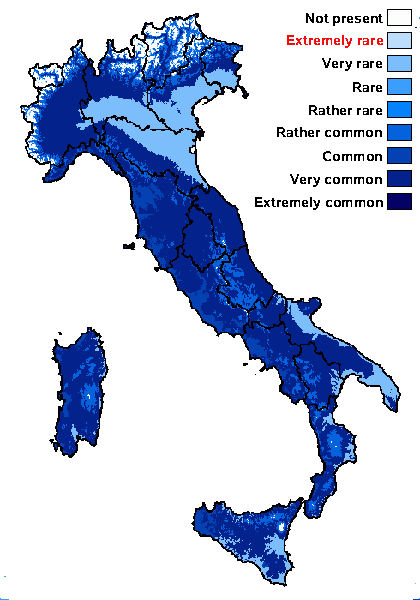
Predictive model
Herbarium samples
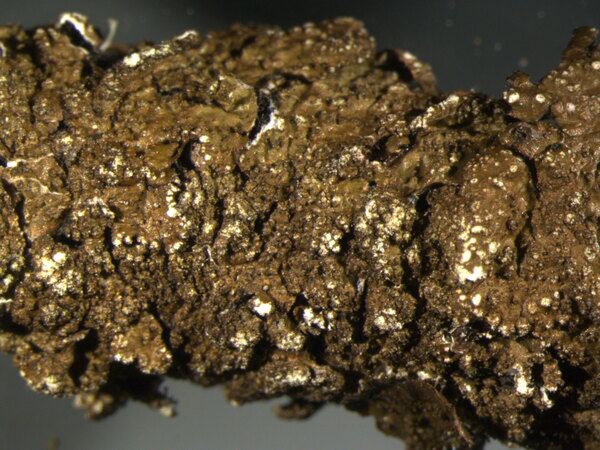

Juri Nascimbene; Owner: Department of Life Sciences, University of Trieste
Italy, Trentino-Alto Adige, Trento, Villa Welsperg, Centro Visitatori del Parco di Paneveggio; altitude: 1030 m
03.04.2009


Juri Nascimbene; Owner: Department of Life Sciences, University of Trieste
Italy, Trentino-Alto Adige, Trento, Villa Welsperg, Centro Visitatori del Parco di Paneveggio; altitude: 1030 m
03.04.2009
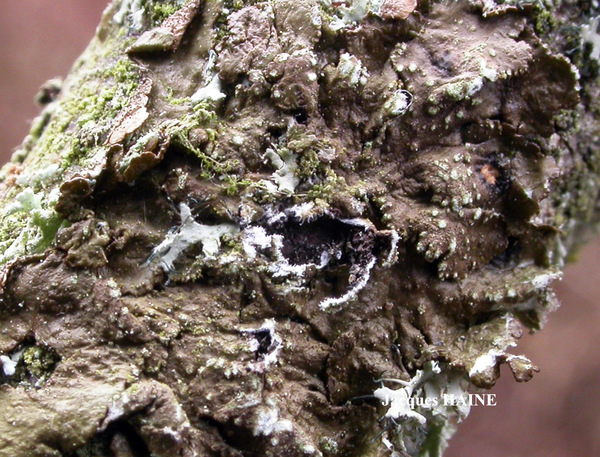
Jacques Haine - Source: http://www.lichensmaritimes.org/index.php?task=fiche&lichen=461&lang=en
France, Ardennes, Givet
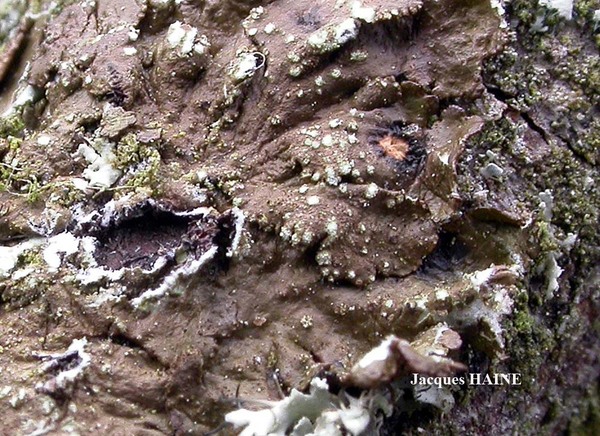
Jacques Haine - Source: http://www.lichensmaritimes.org/index.php?task=fiche&lichen=461&lang=en
France, Ardennes, Givet
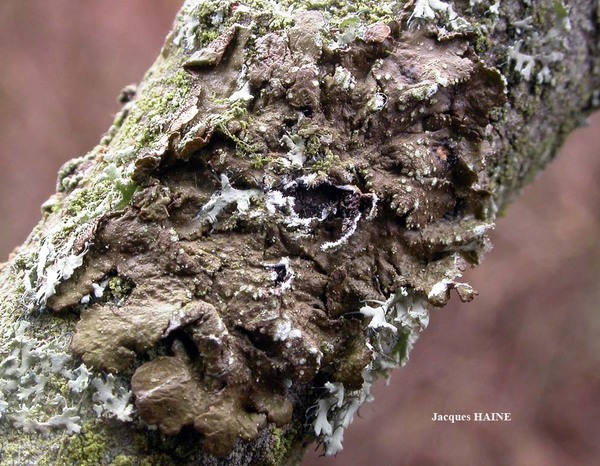
Jacques Haine - Source: http://www.lichensmaritimes.org/index.php?task=fiche&lichen=461&lang=en
France, Ardennes, Givet

Bernard Bouffinier - Source: http://www.lichensmaritimes.org/index.php?task=fiche&lichen=461&lang=en
France, Le Faouet
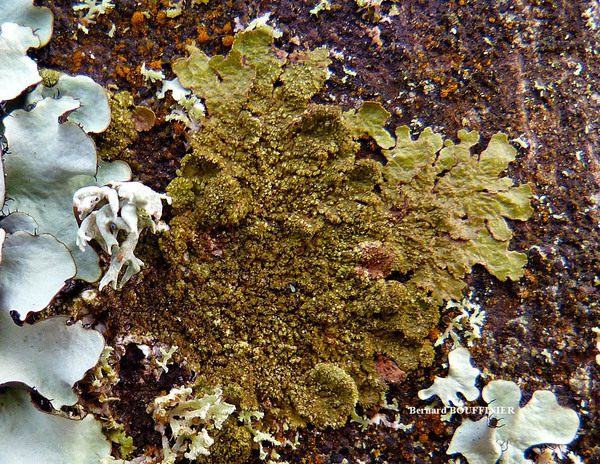
Bernard Bouffinier - Source: http://www.lichensmaritimes.org/index.php?task=fiche&lichen=461&lang=en
France, Le Fret
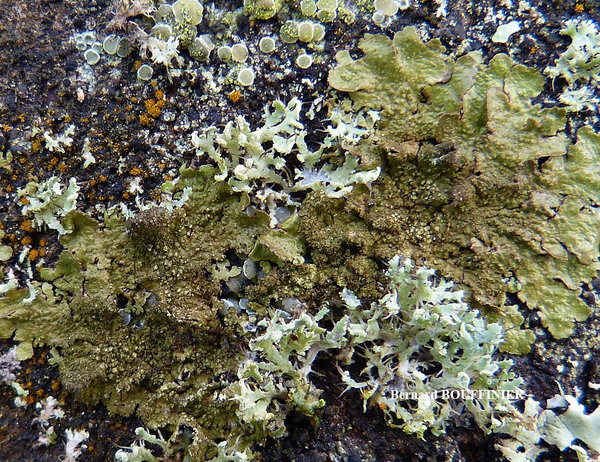
Bernard Bouffinier - Source: http://www.lichensmaritimes.org/index.php?task=fiche&lichen=461&lang=en
France, Le Fret
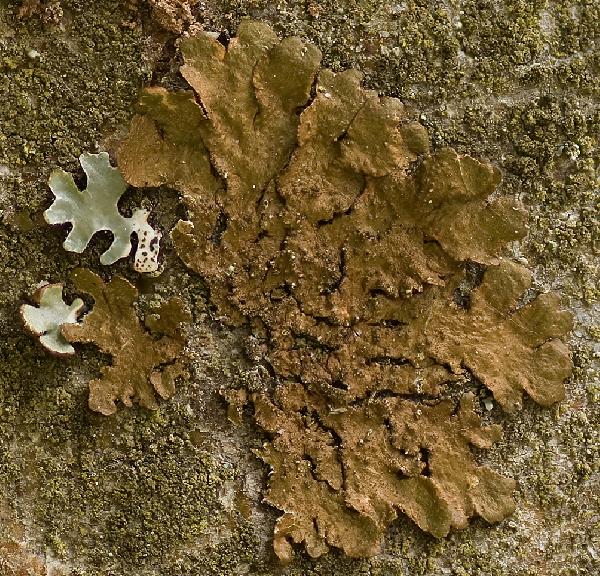
Ulrich Kirschbaum CC BY-SA 4.0 – Source: https://www.thm.de/lse/ulrich-kirschbaum/flechtenbilder
Central Europe; Germany: Hesse.
Growth form: Foliose, broad lobed
Substrata: bark
Photobiont: green algae other than Trentepohlia
Reproductive strategy: mainly asexual, by soredia, or soredia-like structures (e.g. blastidia)
Commonnes-rarity: (info)
Alpine belt: absent
Subalpine belt: very rare
Oromediterranean belt: absent
Montane belt: rather common
Submediterranean belt: very common
Padanian area: very rare
Humid submediterranean belt: very common
Humid mediterranean belt: common
Dry mediterranean belt: very rare

Predictive model
| Herbarium samples |


Juri Nascimbene; Owner: Department of Life Sciences, University of Trieste
Italy, Trentino-Alto Adige, Trento, Villa Welsperg, Centro Visitatori del Parco di Paneveggio; altitude: 1030 m
03.04.2009


Juri Nascimbene; Owner: Department of Life Sciences, University of Trieste
Italy, Trentino-Alto Adige, Trento, Villa Welsperg, Centro Visitatori del Parco di Paneveggio; altitude: 1030 m
03.04.2009

Jacques Haine - Source: http://www.lichensmaritimes.org/index.php?task=fiche&lichen=461&lang=en
France, Ardennes, Givet

Jacques Haine - Source: http://www.lichensmaritimes.org/index.php?task=fiche&lichen=461&lang=en
France, Ardennes, Givet

Jacques Haine - Source: http://www.lichensmaritimes.org/index.php?task=fiche&lichen=461&lang=en
France, Ardennes, Givet

Bernard Bouffinier - Source: http://www.lichensmaritimes.org/index.php?task=fiche&lichen=461&lang=en
France, Le Faouet

Bernard Bouffinier - Source: http://www.lichensmaritimes.org/index.php?task=fiche&lichen=461&lang=en
France, Le Fret

Bernard Bouffinier - Source: http://www.lichensmaritimes.org/index.php?task=fiche&lichen=461&lang=en
France, Le Fret

 INDEX FUNGORUM
INDEX FUNGORUM
 GBIF
GBIF
 DOLICHENS
DOLICHENS
